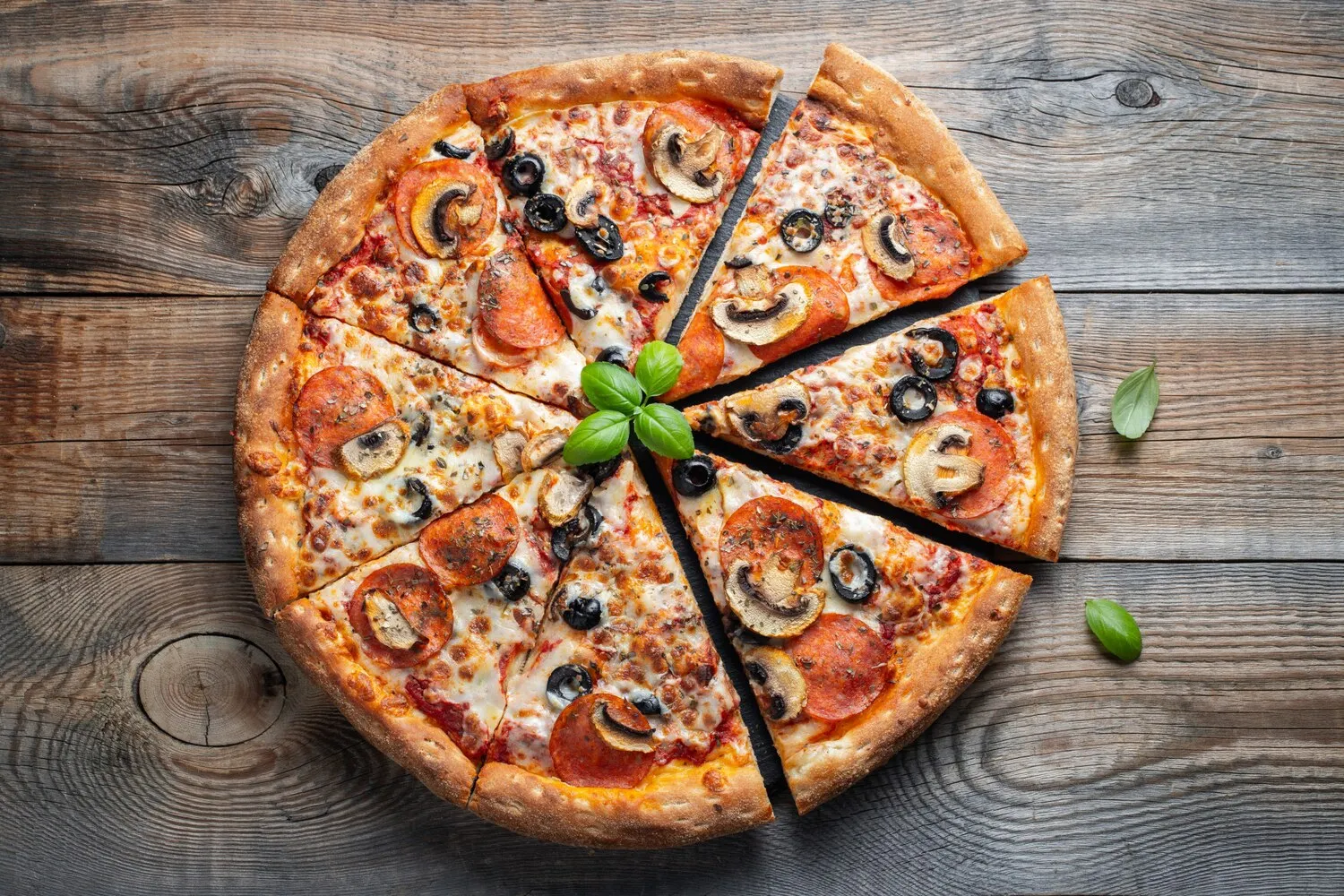
Pizza
Various pizza options are available.
Nutrition Facts
* The % Daily Value (DV) tells you how much a nutrient in a serving of food contributes to a daily diet. 2,000 calories a day is used for general nutrition advice.
Pizza's ancestry can be traced back to ancient civilizations that used flatbreads as a staple food. The modern pizza evolved in Naples, Italy, in the 18th or early 19th century, when flatbread topped with tomatoes became a popular and affordable meal for the city's working class. The addition of mozzarella cheese further solidified its identity.
Pizza is more than just food; it's a cultural icon. It represents sharing, comfort, and accessibility, transcending socioeconomic boundaries and becoming a beloved dish worldwide.
Family Gatherings
Pizza is often associated with family meals and casual gatherings. Its shareable nature makes it perfect for feeding a crowd.
Regional Variations
Different regions of Italy and the world have developed their own unique styles of pizza, reflecting local ingredients and preferences (e.g., Neapolitan, New York, Chicago deep-dish).
Social Food
Pizza is a popular choice for informal social events, parties, and celebrations due to its ease of consumption and wide appeal.
Pop Culture Icon
Pizza is frequently featured in movies, television shows, and other forms of popular culture, solidifying its status as a universally recognized and enjoyed food.
Pizza offers a symphony of flavors, balancing savory, tangy, and sometimes sweet elements. The base flavor profile is dominated by the tomato sauce, cheese, and crust, with endless variations possible through different toppings.
The core flavors are: *Savory:* Primarily from the cheese (mozzarella, provolone, parmesan, etc.) and toppings like meats (pepperoni, sausage, ham) and vegetables. *Tangy:* Provided by the tomato sauce, which is typically seasoned with herbs like oregano, basil, and garlic. Some sauces incorporate a hint of sweetness. *Earthy/Umami:* Mushrooms, olives, and certain cheeses contribute to umami notes. *Fresh/Herbal:* Fresh basil, oregano, or other herbs add brightness and aroma. *Spicy:* Chili flakes, hot peppers, or spicy sausage can introduce heat. Flavor combinations are virtually limitless, allowing for sweet and savory options like Hawaiian pizza (ham and pineapple) or unique regional variations.
Crust Perfection
Use high-quality flour (like '00' flour for Neapolitan style) and allow the dough to rise slowly for optimal flavor and texture. Knead the dough properly to develop gluten, resulting in a chewy crust.
Sauce Simplicity
Use ripe, high-quality tomatoes for the sauce. Keep the seasoning simple (oregano, basil, garlic, salt, pepper) to let the tomato flavor shine.
Cheese Choice
Fresh mozzarella is ideal for many pizza styles, but other cheeses like provolone, fontina, or parmesan can add complexity. Avoid using pre-shredded cheese, as it often contains cellulose that can prevent it from melting properly.
Topping Balance
Don't overload the pizza with toppings. A few well-chosen ingredients will create a more balanced and flavorful experience. Consider the moisture content of toppings to prevent a soggy crust.
Oven Temperature
Cook pizza at a high temperature (450-500°F or higher) for a crispy crust. Using a pizza stone or baking steel can help achieve even heat distribution.
Explore additional Pizza dishes and restaurants
Explore PizzaDiscover top dining spots and culinary experiences in Bregenz.
Explore BregenzLearn more about the food culture, restaurant scene, and culinary heritage of Austria.
Explore Austria